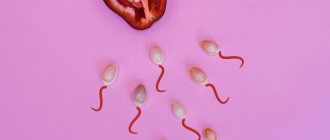Contraceptive methods after childbirth are aimed at preventing the onset of a new pregnancy and protecting against sexually transmitted infections. The difficulty in choosing a method of contraception lies in the fact that you need to take into account not only the woman’s contraindications, ease of use and effectiveness, but also lactation. Breastfeeding imposes restrictions on the choice of certain methods of contraception in the postpartum period.
Why use protection after childbirth?
Pregnancy and childbirth do not rejuvenate the female body, but increase the load on all organ systems. Even in young women, while carrying a child, pregnancy-associated diseases develop and chronic pathologies become aggravated. Therefore, after childbirth, a recovery period is necessary. The optimal period of contraception after natural childbirth is 2 years.
Those who gave birth by cesarean section need not only to wait 2-3 years, but also undergo an examination to make sure that the scar on the uterus is intact. Only after this can you start planning a new pregnancy. Those who ignore medical recommendations will face the following complications:
- anemia of pregnant women;
- threat of miscarriage;
- risk of feto-placental insufficiency;
- chronic fetal hypoxia;
- anomalies of labor;
- threat of uterine rupture along the scar;
- antenatal fetal death.
Therefore, postpartum contraception is a necessity that will help plan a new pregnancy, properly prepare for it and reduce the risks of complications.
Unplanned pregnancy can occur during lactation. But due to increased prolactin, a nursing mother has a higher risk of early abortion, and sometimes the fetus freezes at 5-6 weeks.
Advantages and disadvantages of natural contraception after childbirth
Birth control after childbirth must be effective. And natural contraceptive methods have a high Pearl index, which indicates a high pregnancy rate. For the calendar method, the indicator fluctuates at the level of 9-40, which depends on the correct assessment of the results of monitoring the menstrual cycle and the method of protection on dangerous days. This means that between 9 and 40 women out of 100 will become pregnant within a year if they use this method of contraception.
Natural methods of protection against pregnancy are suitable only for regular couples who are confident that their partner does not have a sexually transmitted infection. Those who prefer risky sexual behavior should use barrier contraception.
To protect yourself from pregnancy while breastfeeding using the calendar method, you must wait until the menstrual cycle returns. It is impossible to determine during what period this will happen during lactation. For a young mother who only breastfeeds, including at night, menstruation can begin as early as 4 months, but sometimes the first bleeding appears after a year, and it takes several more months to establish a regular cycle.
To start using the calendar method, you need to monitor your menstruation for at least 3 months, and the optimal period is 1 year. This will allow you to calculate:
- exact cycle duration;
- average number of days;
- the shortest and longest cycle;
- approximate time of ovulation.
This method of contraception is not suitable for nursing mothers after childbirth. Doctors allow sexual activity within a month from the birth of a child, so another method is needed that will allow you not to get pregnant before the due time.
After childbirth, the calendar method can be used by those who are not breastfeeding. It is necessary to wait for normal menstruation and begin monitoring its duration. To increase the accuracy of the results, you can additionally carry out:
- measurement of basal temperature;
- assess cervical mucus throughout the cycle;
- After the end of menstruation, check the position of the cervix daily.
The formation of a cycle after childbirth lasts individually, but by objective signs it is possible to determine the moment of restoration of fertility.
Breastfeeding women do not ovulate.
This condition is provided by the hormone prolactin. Its release outside the lactation period is suppressed by dopamine. But at the moment the baby is attached to the breast, a signal is sent from the nipple to the brain, which leads to the suppression of the release of dopamine. Therefore, the concentration of prolactin in the blood increases. Prolactin inhibits the secretion of follicle-stimulating hormone and gonadotropin-releasing factor. Therefore, the woman’s follicle does not mature, ovulation is inhibited, and a new pregnancy is impossible. Unprotected sexual intercourse during lactational amenorrhea is relatively safe. But its effectiveness gradually decreases after 3 months after birth.
A prerequisite for this method of contraception is completely natural feeding of the child and mandatory feeding at night. During sleep, the hormone melatonin is synthesized, which is also involved in the regulation of dopamine and the lactation process. Therefore, if you refuse night feeding, prolactin synthesis is inhibited and the cycle can be restored.
If a woman begins to introduce artificial mixtures into her diet, replacing night feedings or several day feedings with them, she needs to use other methods of contraception.
In ordinary life, the beginning of the menstrual cycle is counted from the first day of menstruation. But during the lactation period after childbirth, the restoration of the cycle occurs unnoticed: the concentration of prolactin in the blood decreases and FSH increases, follicle growth and estrogen synthesis are stimulated. Then ovulation occurs, the symptoms of which go unnoticed. If there has been no fertilization, menstruation will begin in 2 weeks, which will mark the end of the first cycle and the beginning of the next. If a woman becomes pregnant, she does not have periods. Therefore, many nursing mothers find out about a new pregnancy only after a few months.
Methods of contraception for a nursing mother
Tell us about us:
Tatiana Kazachenok | 09/24/2015 | 1554
After giving birth, many couples think about contraception. And there are reasons for this: the new baby, the health of the mother, the financial capabilities of the young family.
How long after giving birth should you abstain from sex?
The therapeutic and protective regime after childbirth lasts 6-8 weeks. During this period, the function of all organs and systems of the female body is restored after childbirth, the uterus contracts completely, postpartum discharge stops, and the cervix is finally formed.
When will the cycle be restored and is it necessary to use contraception immediately after childbirth?
Menstruation may resume after 2 months. If a woman is breastfeeding, be absent for 8 months or more. But even without menstruation, the likelihood of getting pregnant again is very high.
A non-breastfeeding woman, as well as a rarely breastfeeding woman, should use contraceptives immediately upon the onset of sexual activity. If you stop night feeding or introduce complementary foods, you must take precautions to avoid unwanted pregnancy.
Contraception issues for a nursing mother need to be carefully considered
Does breastfeeding prevent pregnancy?
This natural method of birth control is called lactational amenorrhea. The mechanism of its action is simple: during breastfeeding, the body produces the hormone prolactin, which is responsible for milk production and prevents the maturation of the egg.
However, this method is effective only in certain cases:
- in the first 6 months after birth;
- if a woman does not menstruate;
- The mother breastfeeds the baby on demand, without supplementing with formula. The intervals between feedings are no more than 4 hours during the day and no more than 6 hours at night.
Does contraception with spermicide harm the baby?
Spermicides are a group of topical chemical contraceptives that are inserted into the vagina. They come in the form of creams, tablets, suppositories. They do not pass into breast milk in any way, so they will not harm the baby. In addition, the high contraceptive effect of spermicides is combined with protection against sexually transmitted diseases. However, read the instructions carefully. Some spermicides do not tolerate soap. When in contact with it, the contraceptive effect is zero.
Lactational amenorrhea (a natural method of contraception) is effective only in the first 6 months. In case the mother feeds the baby on demand.
Is it possible to have an IUD after childbirth? Will there be pain while breastfeeding?
Provided that the cervix is in good condition, an IUD can be inserted 4 weeks after birth. The copper included in the spiral, or the addition of the hormone, does not affect the quality of milk and feeding.
Sometimes nurses complain of discomfort or minor pain in the lower abdomen. They appear during breastfeeding, when the uterus contracts. One of the disadvantages of this method of contraception is that nursing mothers have a higher risk of the IUD falling out than non-breastfeeding mothers.
What birth control pills can you take if you are breastfeeding?
These are the so-called “mini-pills” - birth control pills containing small doses of progestin - an artificial analogue of the natural hormone progesterone. They do not harm the health of mother and child and do not affect milk production. You can take them from the 6th week after birth.
The downside of these drugs is the frequent development of intermenstrual bleeding. But combined oral contraceptive pills are not recommended during breastfeeding, since the substances they contain pass through the milk to the baby and, in addition, can inhibit lactation.
09/24/2015 Mom's health After childbirth (e) Breastfeeding
From the section
We're giving birth
51058
Caesarean section in five questions
Nature predetermines for a woman to give birth through natural means...
Svetlana Ryzhenkova Larisa Avsyukevich
We are waiting
27372
Why does sexual desire increase during pregnancy?
Some people don't feel like having sex during pregnancy.
Everyone belongs to... Elena Timofeevna
We feed
17963
Delicious weekend: 3 recipes for simple and healthy baking for kids 2-3 years old
Store-bought cakes and pastries are not suitable for baby food.
But... Natalya Bogodyazh
Are planning
16336
7 ways to increase your chances of getting pregnant
You have carefully prepared for conceiving a child: you have gone through everything...Anna Troitskaya comments powered by HyperComments
Pros and cons of barrier products after childbirth
Barrier contraception after childbirth does not require a visit to the doctor or compliance with additional conditions of use. These methods do not affect lactation. They can be used as early as a month after birth. The advantage of barrier contraception is protection against sexually transmitted infections.
But some couples refuse them, citing decreased sensitivity during sex. Such statements have no basis; modern condoms are made of very thin latex.
After pregnancy, contraception using condoms is the safest method. The advantages of this method are:
- no effect on lactation;
- protection against infection;
- no doctor’s consultation or examination required;
- does not change hormonal levels;
- can be used by women with somatic diseases.
The condom can be selected according to size and additional properties.
To prolong sexual intercourse, there are condoms with anesthetics, and for latex allergies, special polyurethane products are used. In women during lactation, estrogen levels are reduced, which causes physiological vaginal dryness. Condoms solve another problem - they are treated with a lubricant, which reduces friction and discomfort during sex.
Instead of male condoms, you can use other types of contraceptives for women after childbirth:
- female condom;
- cervical caps;
- diaphragm.
The effectiveness of the use of femidom according to the Pearl index is 5-25, but the method of contraception is not widespread among women. Many of them complain of discomfort during sexual intercourse or pain; men also note psychological discomfort.
Caps and diaphragms have low contraceptive effectiveness, which can be increased through the simultaneous use of spermicides.
Intrauterine devices for women who have given birth
After childbirth, many women decide to have an intrauterine device installed. It will protect against pregnancy, but cannot prevent infection, so it is suitable for permanent married couples. Advantages of the intrauterine device:
- does not affect hormonal levels;
- can be used during breastfeeding;
- suitable for women with contraindications for hormonal contraception (overweight, diabetes, tendency to thrombosis);
- does not require constant monitoring;
- long term contraception.
To install the IUD, you need to see a doctor 3 months after birth. Women who are not breastfeeding need to wait until their cycle returns, because... the IUD is installed during menstruation.
A preliminary examination is required, which includes a smear to determine the degree of cleanliness of the vagina and an ultrasound of the uterine cavity. If signs of inflammation are determined, treatment is prescribed, contraception with a spiral is postponed for 3-6 months after the end of the course.
A metal-containing IUD increases the risk of ectopic pregnancy. Therefore, this method is not recommended for women who have undergone tubal surgery.
With the help of a spiral with hormones, women with hyperplastic processes in the uterus can be protected. If fibroids or endometriosis were diagnosed before childbirth, a hormonal IUD will help prevent the progression of the disease after childbirth.
Not all doctors recommend using an IUD to protect yourself after a caesarean section. It is believed that the focus of aseptic inflammation in the uterus increases the risk of scar failure and subsequent complications during childbirth.
Lactational amenorrhea method
An excellent method of birth control after childbirth can be the lactational amenorrhea method. It is 98% effective and suitable for mothers who breastfeed on demand.
There are several prerequisites for the lactational amenorrhea method to be sufficiently effective. Among them:
- a woman’s absence of menstruation after childbirth;
- intervals between feedings are no more than 3 hours during the day and 6 hours at night (in general, at least 8 breastfeedings per day);
- the child receives additional food (this also includes water) no more than 15% of the total daily volume (i.e. 85% of the food volume comes from breast milk);
- child's age up to 6 months.
Violation of at least one of the conditions significantly reduces the effectiveness of the lactational amenorrhea method and increases the likelihood of pregnancy during breastfeeding. Although I personally know some mothers who used this method until their child was 2 years old, violating the last requirement - but their children were on supplementary feeding (their main food remained milk - see the third requirement). Perhaps this played a role. And yet, I would advise those mothers who do not want to discover signs of pregnancy in the near future not to take risks in this matter.
Hormonal contraception after childbirth
Combined oral contraceptives are the most reliable means of protection against pregnancy, but after childbirth, birth control pills are contraindicated for nursing mothers, with rare exceptions.
Hormones taken orally pass into breast milk and further to the baby. But the main danger comes from estrogens. Therefore, hormonal contraceptives based on gestagens are allowed for nursing mothers. When you can start taking birth control pills after childbirth, your doctor should decide. After examining and assessing the condition after 30 days, he will select the appropriate drug. Safe for nursing mothers:
The drugs contain gestagens, they have a lesser contraceptive effect than in combination with estrogens, so it is important to strictly adhere to the time of taking the pills.
After childbirth, local hormonal contraception can also be used. The Nuvaring vaginal ring is available and contains levonorgestrel. It is placed in the vagina after the end of menstruation for 21 days. After this, the ring is removed, they wait for the onset of menstrual bleeding and move on to a new contraceptive.
Attention! Hormonal depot forms for contraception during breastfeeding are not used, because their active components penetrate the blood and act on the child.
Contraception after childbirth: choosing the best option
Sexual life for a woman after childbirth becomes, frankly speaking, a difficult issue! This is affected by sleepless nights at the crib, and the hormonal storm that is still raging in our body, and many other problems. In addition, the issue of contraception often becomes a stumbling block. Therefore, to prevent your sex life from turning into sexual terror, this article on the website for mothers supermams.ru is devoted to choosing an effective and safe method of contraception after childbirth.
The content of the article
- The provision obliges
- Contraception after childbirth: pros and cons of each method
The provision obliges
The birth of a child is, without a doubt, the most important event for a woman. The baby becomes the center of family life, and everything revolves around him. And, unfortunately, very often in this mess of diapers, bathing and feeding, we forget about the one who needs our love no less than the baby - the beloved man!
Over the past nine months, you and your loved one have enjoyed sex, happily putting thoughts of contraception out of your head. Now, when space in mom’s tummy is vacant, you should seriously come to your senses and decide for yourself whether you want a new pregnancy. There are two important questions to answer here:
- Do you want to test your strength? For the female body, pregnancy and childbirth are a serious test, so it takes at least 2-3 years for complete mental and physiological recovery. If pregnancy occurs earlier, then you not only put an unbearable burden on your body, but also put your unborn baby at risk, who will be difficult to fully “feed.”
- Do you dream of similar children? One of the most popular misconceptions is that a woman cannot get pregnant while she is breastfeeding. In some cases this is true (we will discuss the lactational amenorrhea method further), but no one can guarantee that this is exactly your case.
If you answered “no” to both of these questions, then let’s talk about contraceptive methods after childbirth. Luckily, there are plenty to choose from.
Contraception after childbirth: pros and cons of each method
First of all, visit your gynecologist, and taking into account his recommendations, test results and the characteristics of your condition, select the optimal contraceptive option. And we will try to help, weighing all the pros and cons of each.
Lactational amenorrhea method (LAM)
It is a natural contraception that prevents a woman from becoming pregnant while she is breastfeeding. The bottom line is that during lactation, the female body produces a hormone that suppresses ovulation and the onset of menstruation. It is important to remember that all this applies if the baby is only breastfed, you feed regularly (especially at night), and for 6 months after birth.
- Plus of lactational amenorrhea: Absolutely harmless for both mother and baby.
- Minus: As we already said, it does not provide a 100% guarantee.
Combined oral contraceptives
Familiar to many from pre-pregnancy times, hormonal preparations contain a minimal amount of hormones and do not have a serious effect on the body. You can take them before the first menstruation begins after childbirth.
- Plus: We return to our usual schedule - we swallow it once a day, and we don’t worry about pregnancy.
- Disadvantage: Unacceptable for breastfeeding, since it reduces the volume and duration of lactation, and hormones enter the baby’s body through milk and negatively affect the baby’s development. Therefore, such drugs can only be taken after breastfeeding is completed!
Progestin medications (mini-pills)
Contraceptive pills that contain a progestin component and lack estrogen, which reduces lactation and is contraindicated for a child.
- Plus: Optimal for breastfeeding.
- Cons: Not found









